With approximately 400,000 species of flowers in the world, it’s understandable that even the most experienced horticulturists and gardeners are going to forget the names of certain flowering plants. From nicknames to scientific classifications, there’s always something new to learn about flowers that start with A.
This means that if you’re new to the world of flowers, don’t feel too much pressure to remember the name of every species in your garden.
Putting flowers into categories (such as by color or flowers that share the same first letter) is probably the best way to learn the names of multiple flowers at the same time.
Whether you’re looking to expand your garden or you’re trying to remember the name of a particular species, here is our list of flowers that start with A!
1. Amaranth (Amaranthus)
Amaranth is a genus of around 75 flowering plants native to virtually every continent except Antarctica. These flowers are cultivated for various purposes, including as vegetables or ornamental plants. While there are several species and varieties, amaranths are known for producing reddish-purple clusters of flowers on spikes.
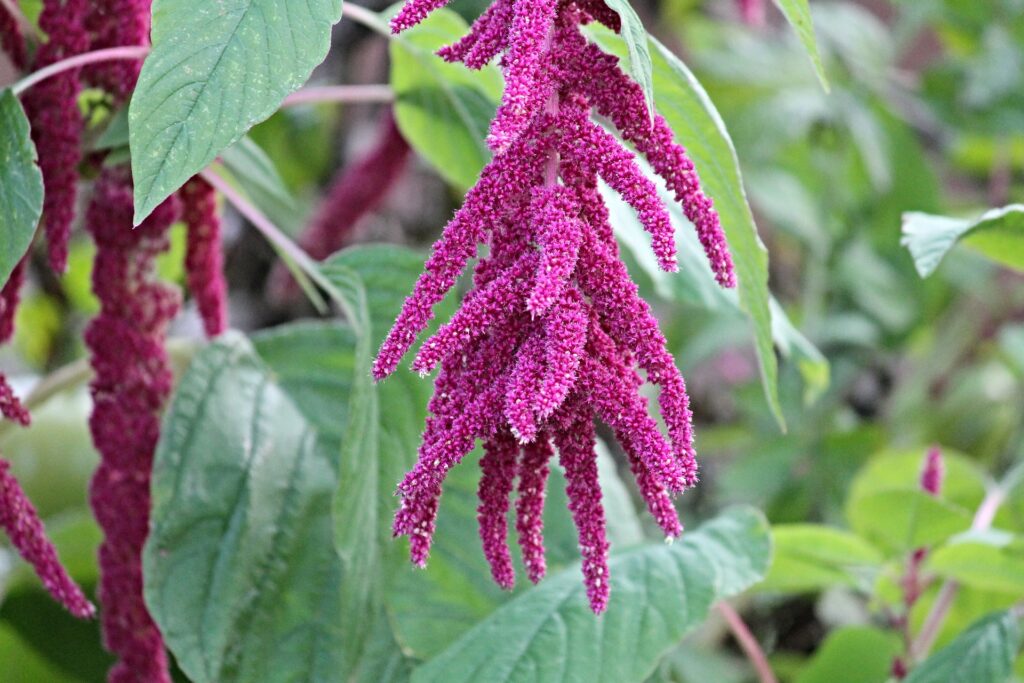
2. Agapanthus
Agapanthus is a genus of flowering plants, with most species sharing the common nicknames of African lilies or lily of the Nile in the UK. While the species are native to southern African countries, the flowers aren’t actually lilies.

Agapanthus flowers are trumpet-shaped and bloom in clusters in summer. They are most popularly known for the lilac and pale violet coloration.
3. Anemone
Not to be confused with the underwater plant, anemone is a genus of flowering plants that belong to the buttercup family. These flowers are native to the subtropical and temperate regions across most continents. Depending on the species, anemone flowers are known to bloom in spring or fall, allowing for a splash of color to a garden for many months.
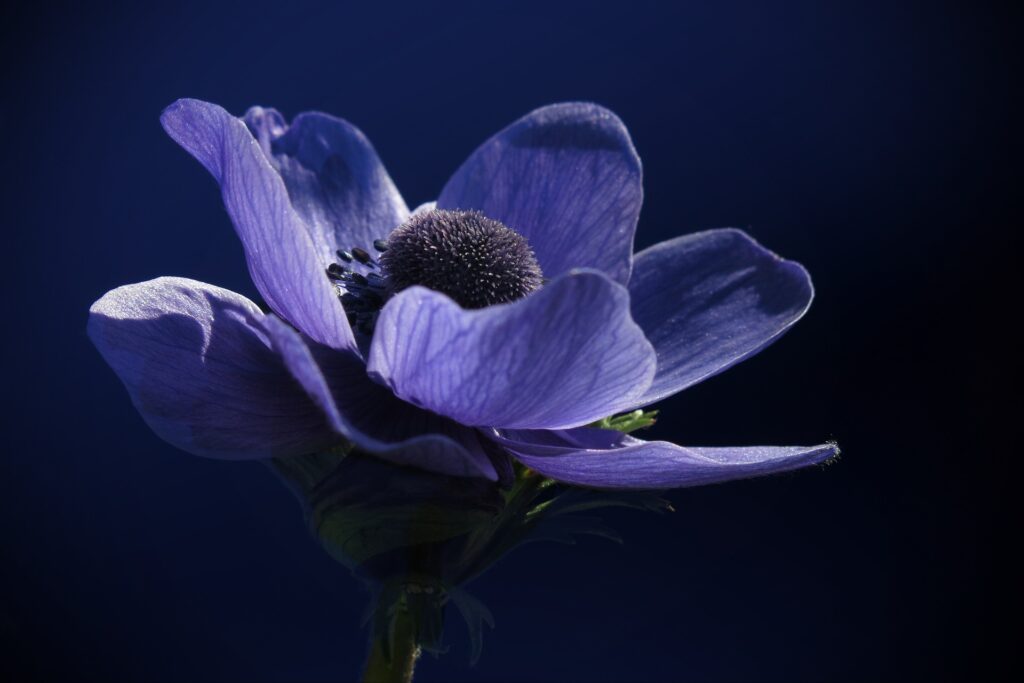
Anemone perennials consist of upright stems bearing flowers of 5-6 rounded petals and a dark center. The petals vary in any color depending on the species.
4. African Daisy (Osteospermum)
A small tribe in the sunflower and daisy family, African daisies are a genus of flowering plants native to eastern and southern African countries and along the Arabian Peninsula. Exhibiting the beloved daisy-like appearance with disc and ray florets, these humble flowers are commonly planted in public flower gardens and along borders.
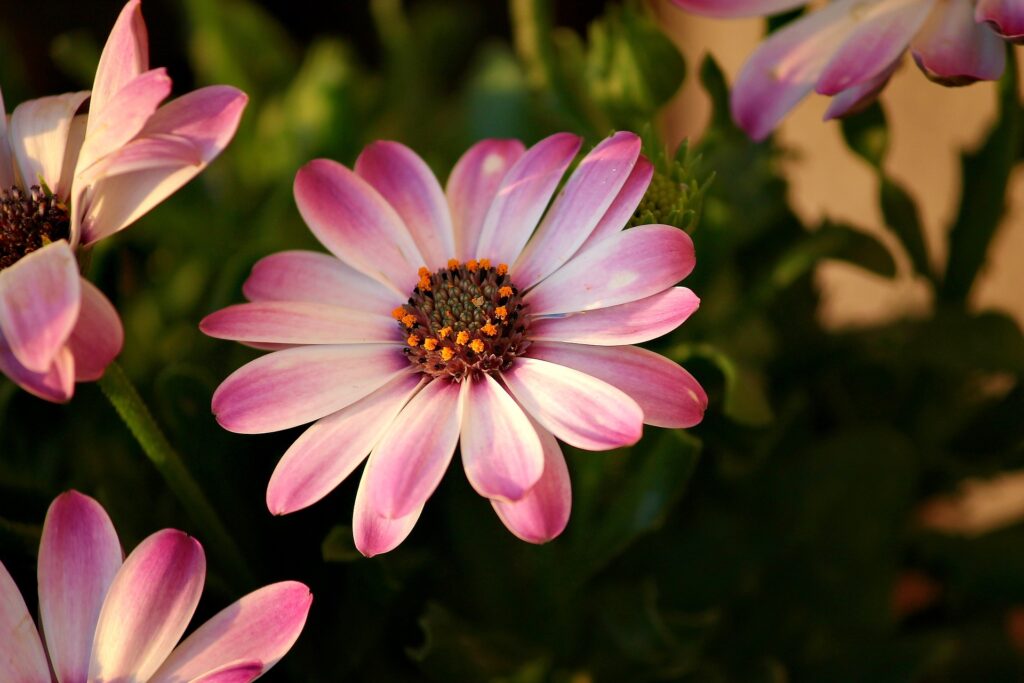
Not only are African daisies favored for their array of brightly colored petals, but they are notoriously easy to care for thanks to their preference for rocky soils and neglect.
5. Allium
Allium is a genus of hundreds of flowering and non-flowering species, including onions, garlic, chives, shallots, leeks, and scallions. The flowering species, however, are also cultivated for their unique appearance.
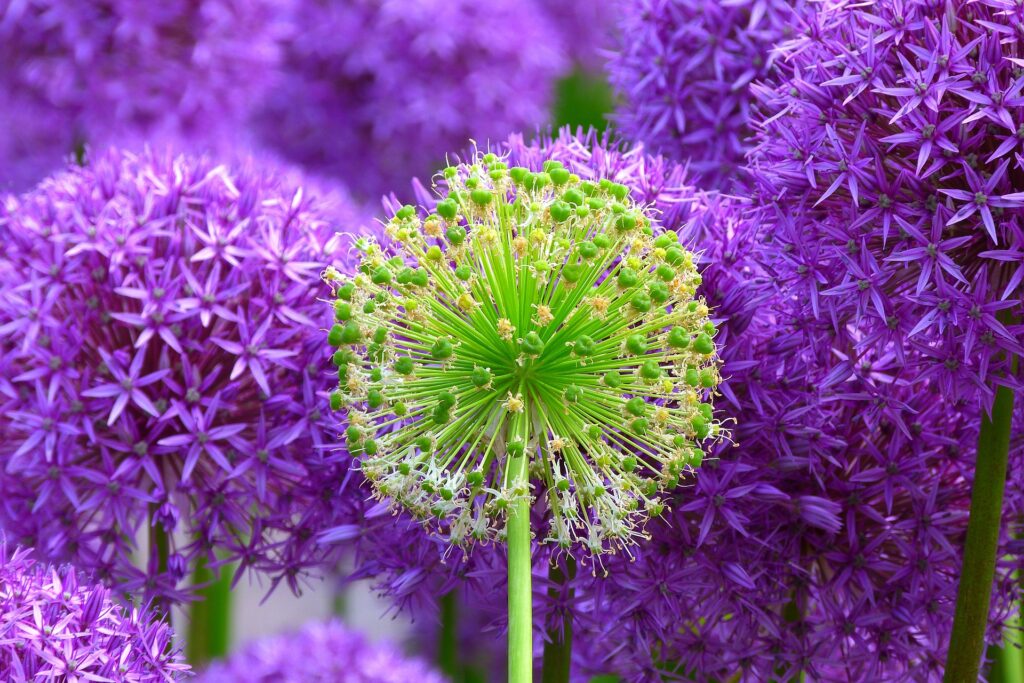
Some species are ornamental onions that produce purple, pink, blue, yellow, or white globe-shaped clusters of flowers.
Alliums are easy to grow. They typically prefer full sun but a tolerant or partial shade, and their bright coloring works to attract pollinators. Plus, they can be planted in rock gardens or cut for floral arrangements.
6. Aster
Aster is a genus of around 170 flowering plant species and over 600 varieties. Most aster flowers are known for their distinctive daisy-like appearance with the ray floret structure and vivid coloration.
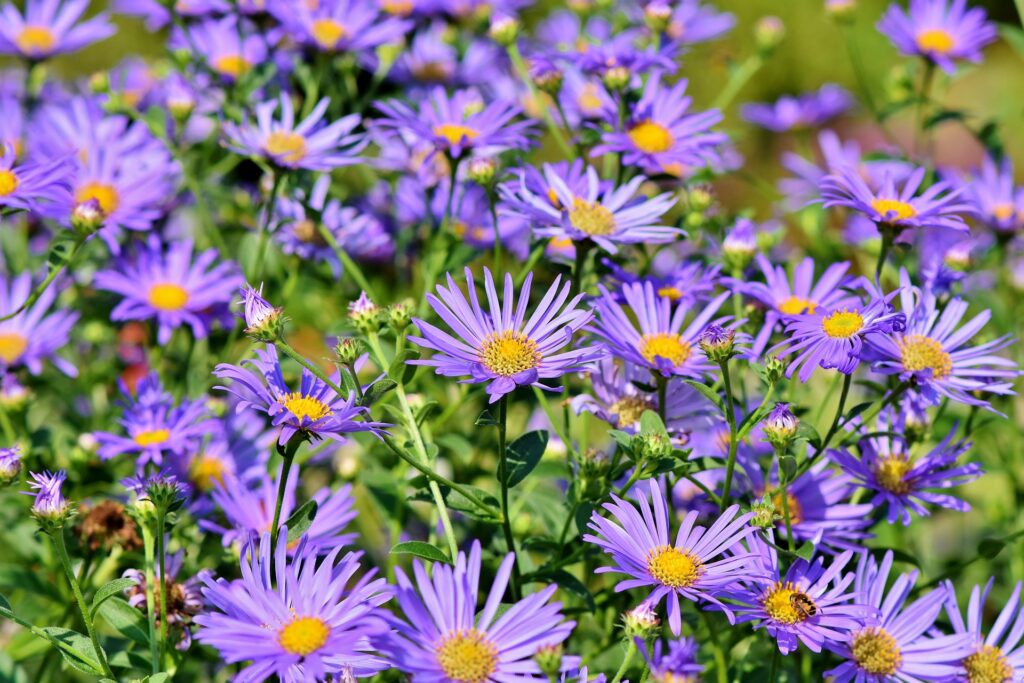
Not only do they range widely in color, but they also vary in size depending on the species, with the compact varieties suiting borders and taller species adding dimension and height.
Interestingly, the name ‘Aster’ derives from the Ancient Greek word for ‘star’, which is due to the flower’s star-like structure.
7. Angelica
Angelica is a genus of tall annual or perennial herbs found in subarctic and temperate regions across the Northern Hemisphere.
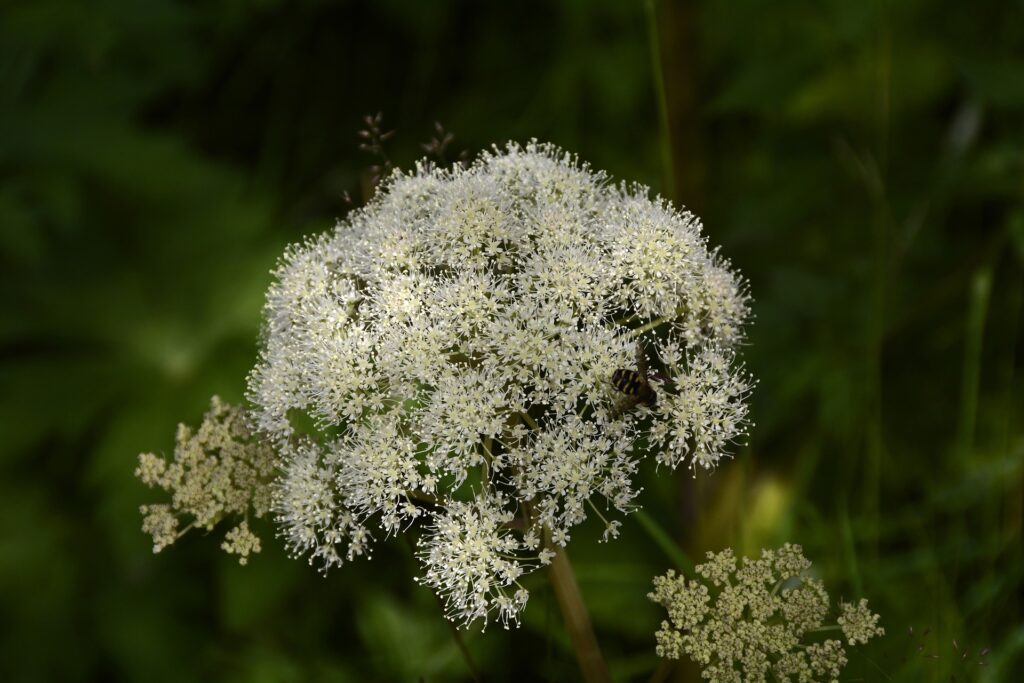
Ranging in heights of between 1 and 3 feet tall, these plants are known for producing umbels of white (or often green-white) small flowers. These flowers only bloom from June to August a year after being planted.
The pleasant compounds of white flowers make Angelica species ideal for filling in the space of a border with some neutral colors. Angelica flowers are also used in holistic medicine, particularly in China where the species are mostly found.
8. Amaryllis
Amaryllis is a small genus of only two flowering bulb species, Amaryllis belladonna and Amaryllis paradisicola. These flowers are native to the rocky Western Cape of South Africa and are known for their lily-like appearance – hence the genus’ nicknames of Easter lily, belladonna lily, and Jersey lily.

Both species in the amaryllis genus produce trumpet-shaped, lily-like flowers that are typically either pink or red. They are favored amongst gardeners for their beautiful fragrance.
9. Acanthus
Acanthus is a genus of flowering plants found in warm and tropical climates in Asia and the Mediterranean Basin. The 30 species in the genus are often nicknamed ‘Bear’s breeches’.
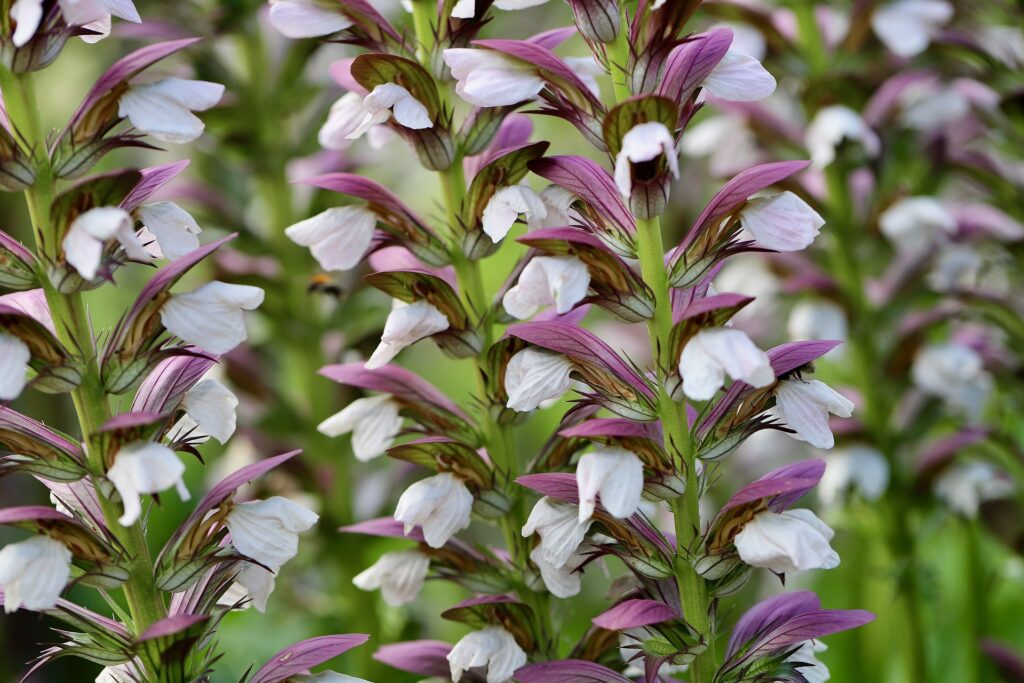
Acanthus flowers are considered an invasive species, which is why gardeners typically grow them in plant pots before planting them in a flower bed.
These flowers commonly consist of tall spikes with spiny leaves and beautiful white, purple, or pale pink flowers. They can reach up to 2 meters tall, providing an elegant height difference in a flower bed.
10. Alyssum
Native to northern African countries, Asia, and Europe, alyssum is a genus of up to 170 flowering plants known for their fragrant and delicate clusters of yellow, white, purple, and pink flowers. Sweet alyssum (alyssum maritimum) is arguably the most widely cultivated species that is related to the genus and was once included in it.

Alyssum flowers typically grow in a mound-forming or sprawling structure, and thanks to their ability to self-seed, they are known to grow randomly in a garden. They are a favored food of caterpillars.
11. Angelonia
A genus of around 30 species, angelonia flowers are found from Mexico to Argentina and are most popularly grown in window boxes or cut in a flower arrangement.
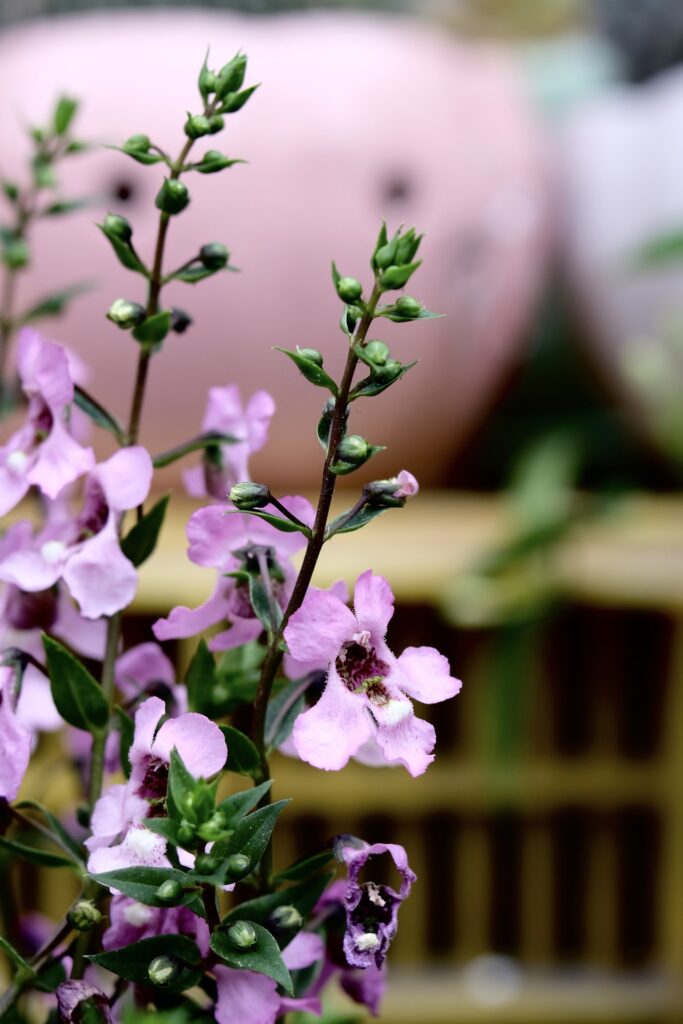
Following, these flowers are notorious for attracting pollinators thanks to the tiny hairs in the inner corolla that produce oils for oil bee pollinators.
Last but not the least, Angelonia flowers grow on upright stems in a tubular shape. And also, They come in a variety of colors, including white, mauve, coral, and blue.
12. Aconitum
A genus of over 250 flowers, aconitum flowering plants are also known as wolf’s-bane, monkshood, blue rocket, women of poisons, among other nicknames. Furthermore, Aconitums are native to mountains and mountain meadows across the Northern Hemisphere. Thus, they mostly consist of erect stems bearing unique purple, pink, blue, yellow, or white uniquely-shaped petals.
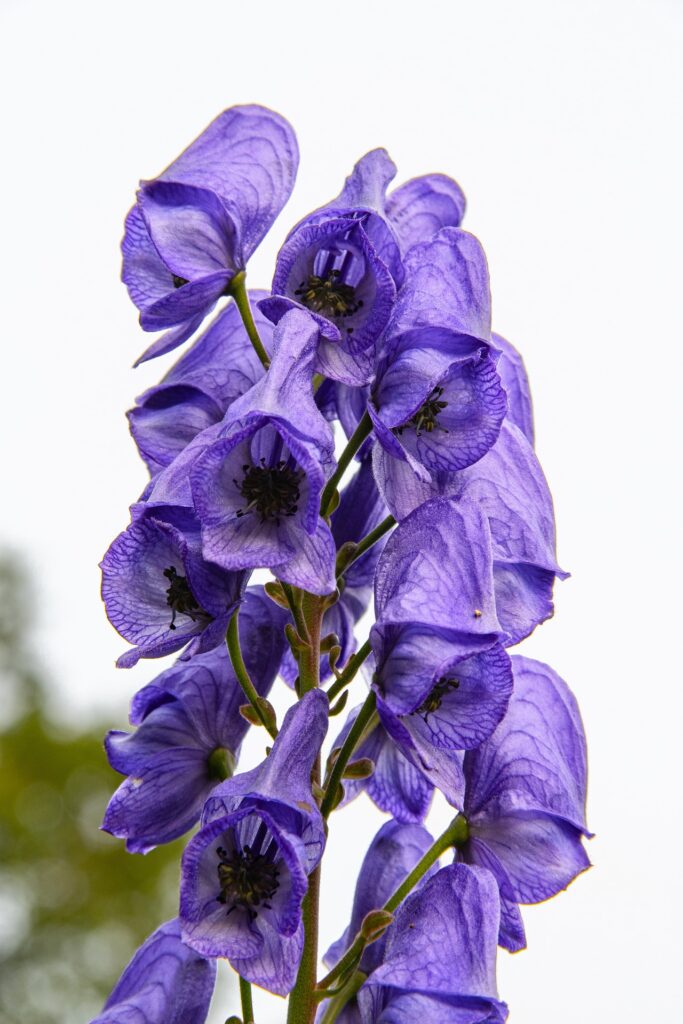
Unfortunately, despite their fascinating appearance, aconitum flowers aren’t commonly grown in gardens as they are highly poisonous. Some florists will use them with care, however.
13. Ageratum
These fluffy flowers are highly favored by gardeners as a fascinating addition to filling an empty space in a flower bed. However, new gardeners should know that a few Ageratum species are poisonous that are known for causing liver lesions.
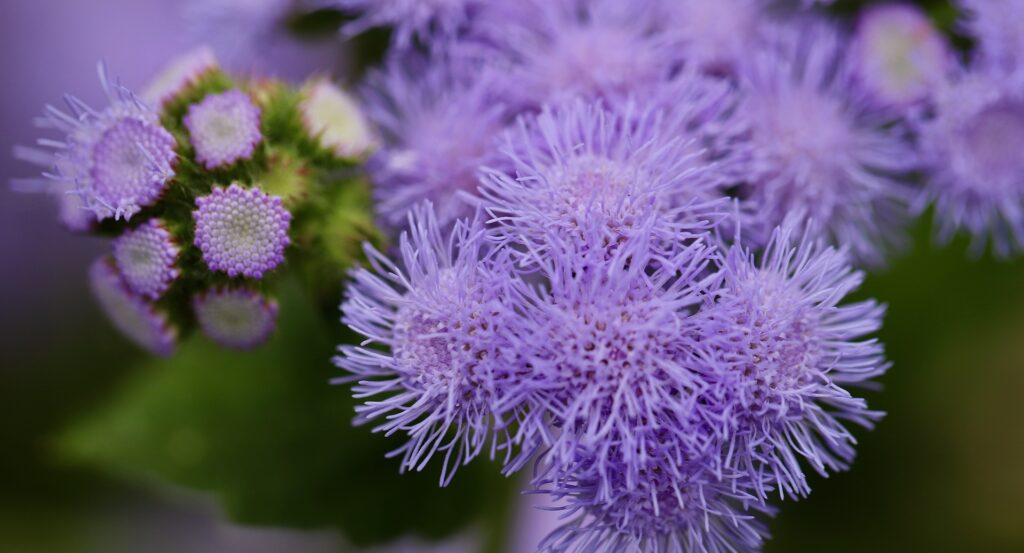
In fact, known as whiteweed in the United States, ageratum is a genus of tropical flowering plants native across the USA and Central America. In detail, these are whimsical flowering plants that produce a sea of pom pom-shaped blooms. While they are most commonly found in a blue color, they also appear in white, lavender, pink, and red shades.
14. Alstroemeria
Also known as the lily of the Incas or the Peruvian lily, alstroemeria is a genus of South American-native flowering plants. Despite their nicknames and lily-like appearance, these flowers are not related to actual lilies. Thus, they are favored in gardens thanks to their long flowering season.
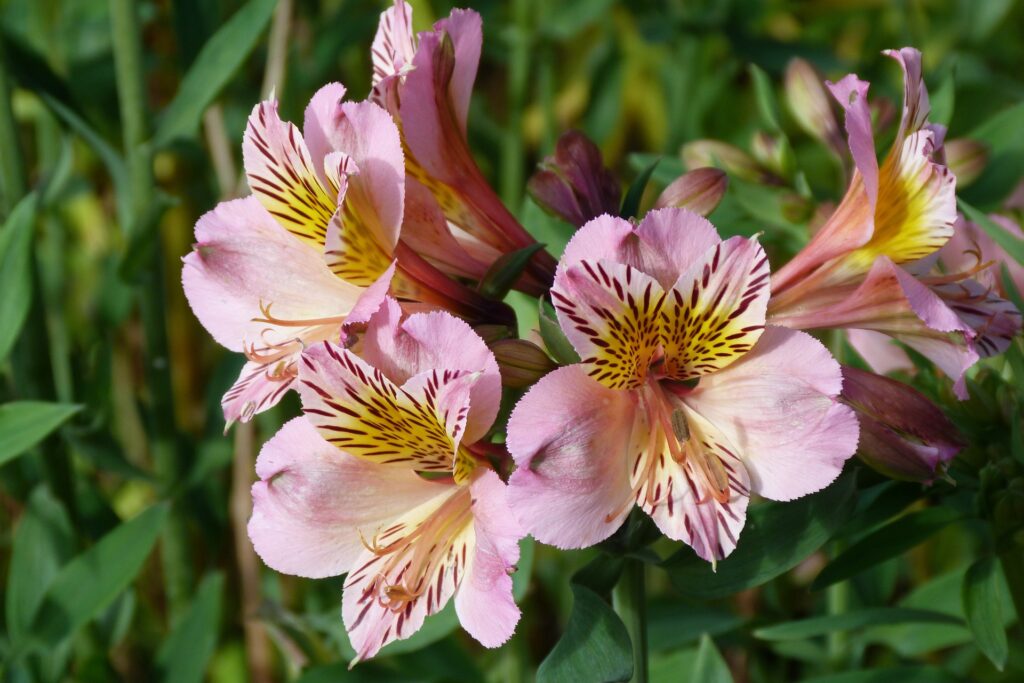
Following, Alstroemeria flowers bloom feature around 5 long petals that curve like a lily, varying in color including shades of red, white, green, orange, pink, and more. Furthermore, they are typically streaked or flecked with darker colors.
15. Alchemilla Mollis
Also known as the lady’s-mantle, alchemilla mollis is a southern European-native herbaceous perennial. In addition, they are commonly grown as an ornamental plant and known for the dewetting properties of the leaves, wherein the light green leaves collect elegant droplets of water.
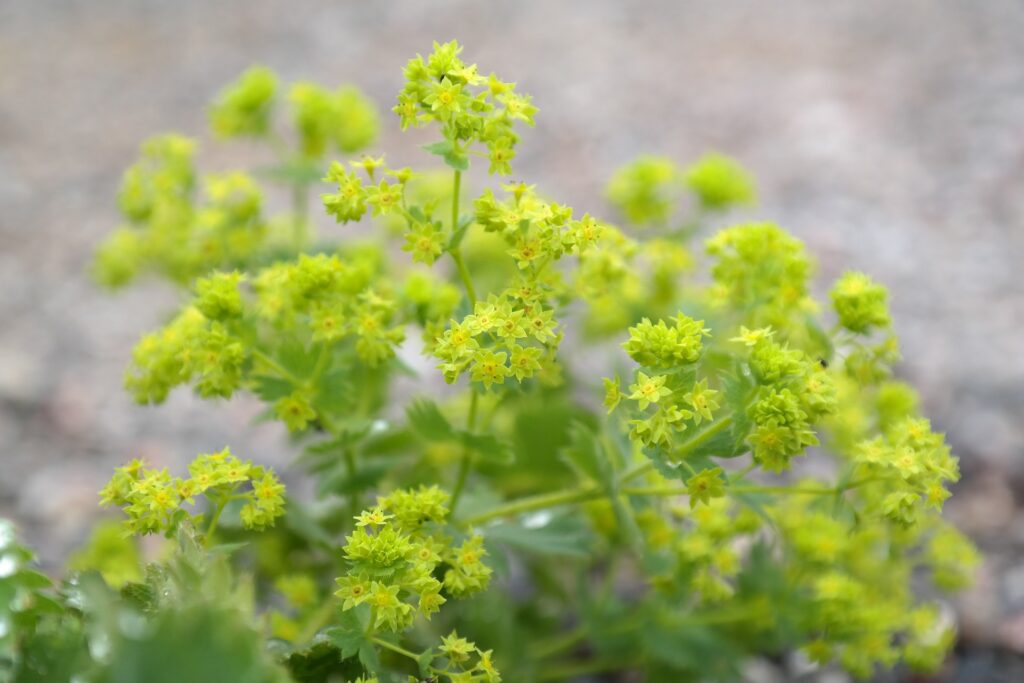
In fact, Alchemilla mollis produces clusters of small yellow flowers, creating a blanket of yellow and green – which is why the lady’s-mantle is most commonly grown as groundcover. Moreover, they are self-seeding and are known to become invasive.
16. Agrostemma
Agrostemma is a genus of flowering plants, with the most popular species being agrostemma githago, also known as the common corncockle. These flowers are found across Europe and the Mediterranean, but they are interestingly commonly known as a weed.

Despite being known as a weed, agrostemma produces attractive flowers that appear somewhat tropical thanks to the 5-6 rounded petals and vibrant colors. These flowers are marked with darker faint streaks and a whitened center.
17. Adonis
Adonis is a genus of flowering plants native to Asia and Europe. Moreover, there are around 20-30 species in the genus that typically grow between 4-16” in height. Thus, the name derives from Aphrodite’s mortal lover Adonis, as the flowers are said to have originated from his grave.
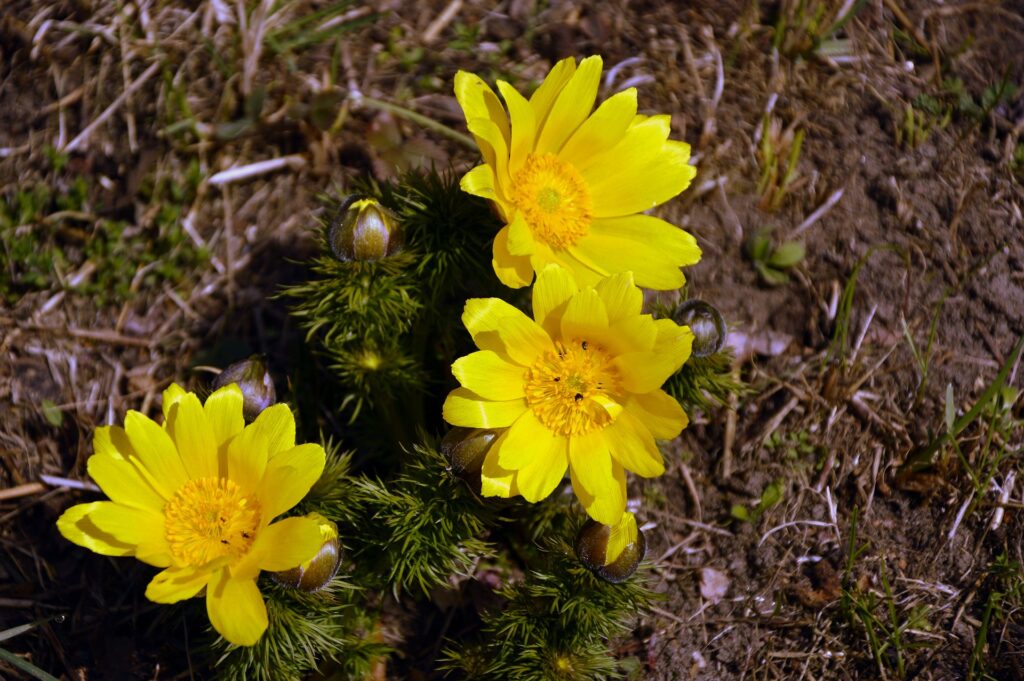
Indeed, Adonis flowers are simple yet attractive additions to a garden. Besides, they consist of feathery, fine leaves with yellow or red flowers made up of up to 30 petals.
Conclusion
So, there you have it! Turns out there’s a bunch of flowers that start with A. At last, hopefully you have found the name of that specific flower from our list.
We hope you learned something from this article, here are other articles that you can learn from:
37 Pretty Flowers That Start With C (Including Pictures)







